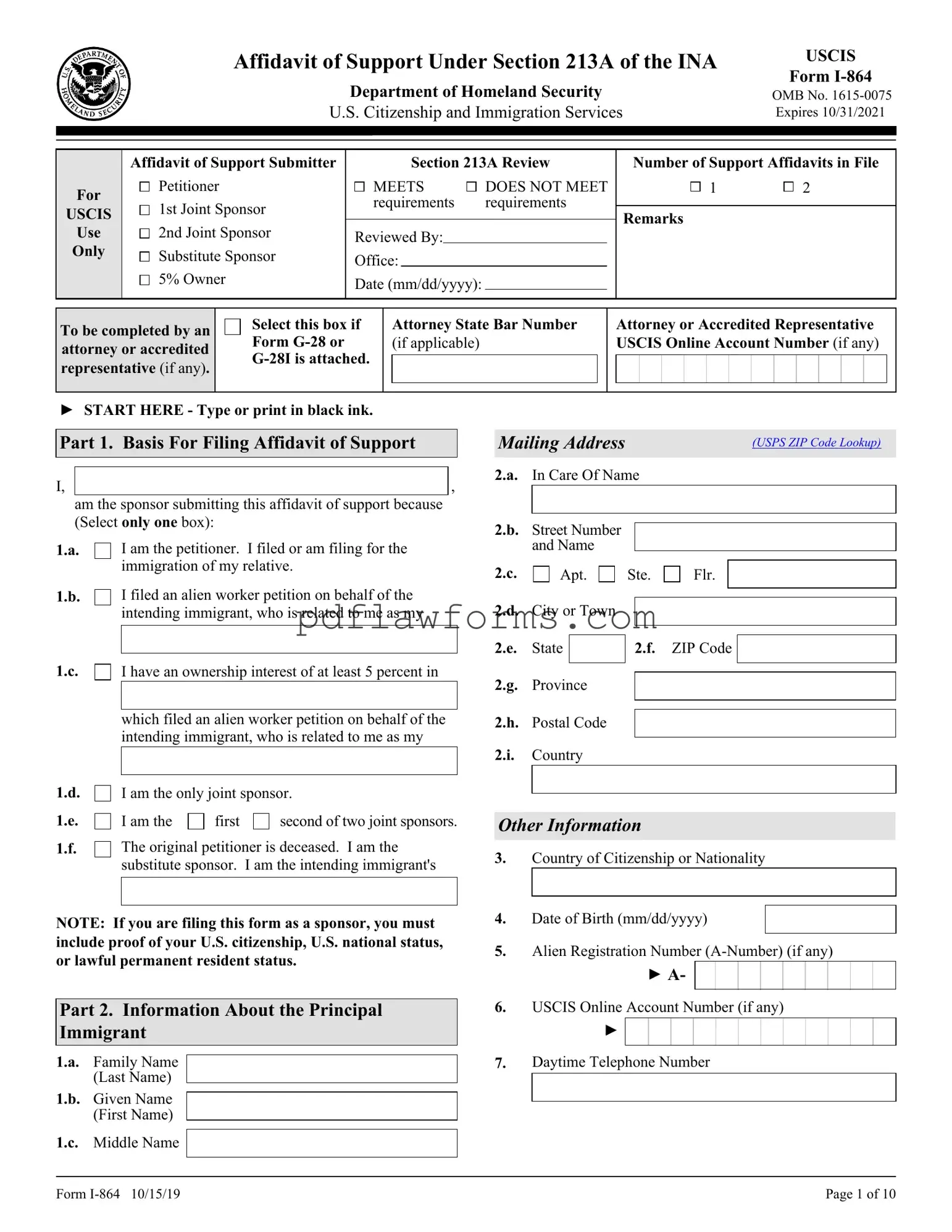Filling out the USCIS I-864 form, also known as the Affidavit of Support, is a crucial step in the immigration process. However, many people make common mistakes that can lead to delays or denials. One frequent error is not providing accurate income information. It's essential to report your total income, including any additional sources such as bonuses or side jobs. Underreporting income can raise red flags and complicate the application process.
Another common mistake is failing to include the correct household size. The I-864 requires you to list all individuals who will be part of your household. This includes not only yourself and the immigrant but also anyone else who lives with you and contributes to the household income. Omitting someone can make it seem like you have a higher income per person than you actually do, which could lead to issues.
Some applicants overlook the requirement to provide supporting documentation. Simply filling out the form isn't enough; you must also attach evidence of your income, such as tax returns, W-2 forms, or pay stubs. Without these documents, your application may be considered incomplete, causing unnecessary delays.
Additionally, many people forget to sign and date the form. It may seem trivial, but a missing signature can result in the entire application being rejected. Always double-check that you have signed the form before submitting it. A simple oversight like this can lead to significant setbacks.
Another mistake is not understanding the income requirements. The I-864 has specific guidelines regarding the minimum income needed to sponsor an immigrant. If your income does not meet the required threshold, you may need to find a co-sponsor. Failing to recognize this can lead to a denial of the application.
Misunderstanding the use of assets is also a common pitfall. While you can use assets to supplement your income, they must be liquid and readily available. Many applicants mistakenly believe that any asset counts, but only those that can be easily converted to cash will qualify. This misunderstanding can lead to complications in proving financial stability.
Finally, some individuals neglect to keep copies of their submitted forms and documents. Having a record of what you submitted is invaluable if any questions arise later. It’s always a good idea to keep a personal copy for your records. This simple step can save you time and stress down the road.
